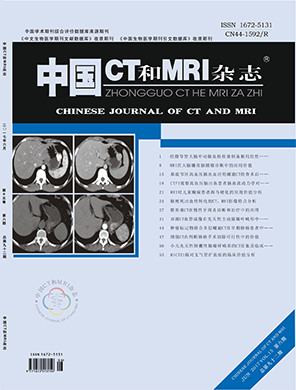Head and Neck Imaging
Study on the Application of MRI in Placenta Implantation*
Author:LI Hong
affiliation:The Third Affiliated Hospital of Zhengzhou University, Zhenzhou 450052, Henan Province, China
PDFAbstract
Objective To study the application value of magnetic resonance imaging (MRI) in placenta implantation. Methods The clinical data of 100 patients with suspected placenta implantation who underwent ultrasound examination and MRI in our hospital between January 2014 and June 2016 were analyzed retrospectively. With postoperative pathological results as the golden standard, the diagnostic sensitivity, specificity and accuracy were compared between ultrasound and MRI. Another 50 pregnant women without placenta implantation were included into normal control group, and MRI signs were compared between the two groups. Results Postoperative pathology diagnosed 60 cases with placenta implantation. The diagnostic sensitivity, specificity and accuracy of MRI were 83.33%, 95.00% and 88.00%, respectively. Compared with those of ultrasound (75.00%, 90.00% and 81.00%), there were no significant differences (P>0.05); The wave like changes at interface of placenta and uterus, muscle layer becoming thinner or absent at placenta attachment sites, uterine pyriform disappearance, striped low signal in placenta, placental vascular shadow increasing, uterine wall or vessels around uterus increasing, perimetrium signal interruption or loss and other MRI signs showed no significant differences between the two groups (P<0.05). Conclusion The effects of ultrasound and MRI are similar in the diagnosis of placenta implantation. Muscle layer becoming thinner or absent at placenta attachment sites and increase of uterine wall or uterine blood vessels can be used as an important MRI sign for diagnosis of placenta implantation.
【Keyword】Placenta Implantation; Magnetic Resonance Imaging; Ultrasound; Diagnostic Value; Signs
【Chart number】R714.4
【Document Identification Number】A
【DOI】 10.3969/j.issn.1672- 5131.2017.06.039
Chinese journal of CT and MRI
th15Volume, th 6 Issue
2017Year06Month

Related articles